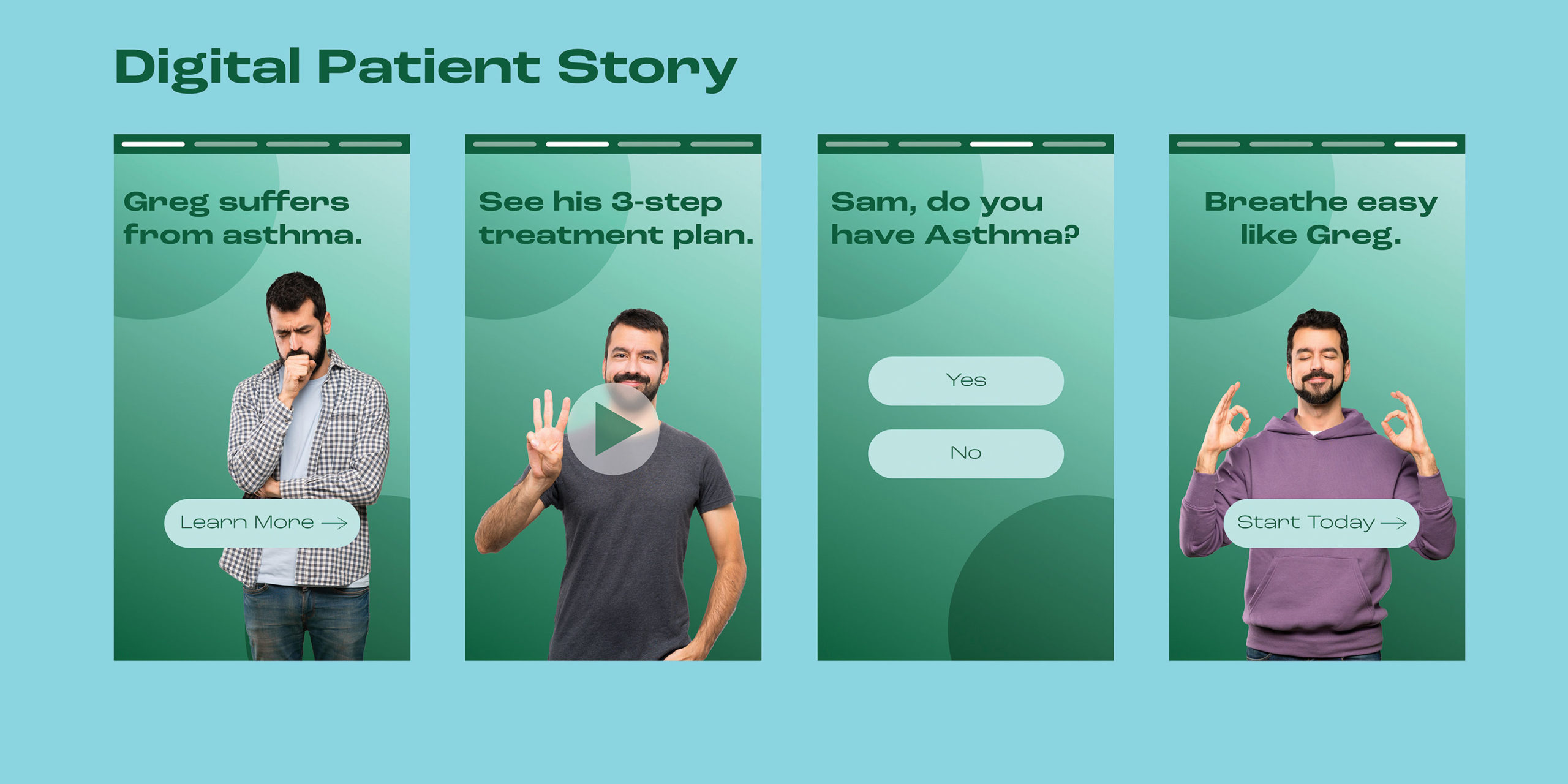Patients are people first, and no approach is better to communicate with people than storytelling.
Stories cause the release of various hormones that sharpen attention, help people remember your messages, and motivate behavior. For example, oxytocin, the “love hormone,” strengthens a person’s empathy and, when paired with cortisol, creates an immersive experience.
When a story is told well, one can’t help but get sucked in—invested until the very end. That is the high level of attention you want to achieve with your patient marketing content.
While patient storytelling is a powerful tool for pharma brands on its own, now is the time for brands to push their storytelling efforts further by leveraging technology and data to scale, personalize, and optimize their campaigns.
Digital Helps Brands Elevate and Scale Storytelling
By combining the power of storytelling with the interactivity and scalability of digital, brands can exponentially increase the exposure to, and the effectiveness of, their patient storytelling initiatives. Bringing patient stories to life in a digital format and delivering them through digital channels helps brands:
- Expand their patient reach
- Capture and hold patient attention with a mix of audio, video, and static content
- Generate engagement through interactive elements within the digital story
- Optimize content quickly and cost effectively
Another benefit of digital storytelling is the ability to collect patient insights. Pharma marketers can then access highly actionable data detailing where patients came from, what actions they took within the digital story once they arrived, and where they went after leaving the story. Collecting this level of first-party data is critical, especially for brands who want to deliver personalized stories to patients and leverage AI in the future.
Personalization Is a Human Empathy Engine for Patient Storytelling
Injecting personalization into patient storytelling ensures the information will be extremely relevant and relatable for each patient. This leads to patients having an empathetic response as they see themselves in the shoes of the patient in the story, possibly having been in a similar situation, faced a similar challenge, felt a similar feeling, and so on.
Creating experiences that elicit an empathetic response from patients buys brands additional attention from that patient. It’s at this point where brands can offer a solution to the challenge faced in the story.
Positioning a medical treatment, device, etc. as the hero in the story, and showing how it has positively impacted the lives of other patients, will elicit a positive emotional response from the story’s audience, and they will desire the continuation of those feelings. Patients will seek out the product from the story to see if it can be a hero for them as well.
Two Types of Personalization for Patient Storytelling
Outside of pulling together the right team and sourcing the best tools, determining which aspects of the patient story to personalize is an important early step. Knowing what to personalize provides clarity on which technique to use: data-driven or action-based.
1. Use Data to Drive Patient Story Personalization
Data-driven personalization uses previously collected data to drive variations in the story which make the story relevant to each patient. With digital stories, brands can collect additional patient data each time a patient engages, so even if you don’t have a lot of data to start with, many key insights can be collected over time.
Different types of data can be used to personalize a patient story, from patient name to patient segment. Once the data has been identified, business rules are created around each data point that will be used.
Think “if/then.” If a patient is classified as “recently diagnosed,” then show Story A. If a patient is classified as “on therapy,” then show Story B. As each patient goes through the digital story, that patient’s corresponding “segment data” will be used to serve up Story A or B.
This provides brands with a scalable solution to deliver personalized digital stories to each patient. The best part? It’s being done successfully within pharma today, which means marketers can start implementing this approach right away.
2. Use Patient Actions to Drive Story Personalization
Action-based personalization is the real-time swapping of content within a digital story based on actions the patient is taking. Action-based personalization can be used standalone or in conjunction with data-driven personalization. Often, brands start by using action-based personalization with data-driven personalization coming later.
Some of the best ways to bring action-based personalization to life in digital stories are through surveys or interactive elements. Think about the previous example whereby the brand wants to deliver Story A to recently diagnosed patients and Story B to patients currently on therapy but does not have the necessary segment data. In this case, asking a survey question early in the story would allow patients to identify the content they are interested in, setting them down a path to Story A or B.
Action-based personalization puts the power in the patients’ hands.

Using AI to Optimize Patient Storytelling
AI is continually advancing its capabilities and applicability to everyday life. Like other industries, life sciences companies are taking notice, and a lot of buzz is building around its applicability for sales and marketing.
Specifically for patient storytelling, AI can be used as a prediction engine designed to optimize campaign performance. Today, AI tools can ingest large amounts of data, analyze it against pre-set criteria, and recommend improvements to the content based on what’s working and what’s not.
Digital stories provide the perfect mechanism to feed data into an AI tool. As patients move through stories, they generate data by engaging with the content. Patients spend more time in certain areas of a story than others, some taking a converting action, while others do not.
AI can be configured to analyze all of this data and deliver story optimization recommendations. Marketers can then update the story based on the AI recommendations and start the entire cycle over again, feeding new patient engagement data back into the same AI tool for further refinement.
As this process repeats as part of a patient storytelling campaign, each story is more refined and effective than the last, helping brands ensure more patients have access to the information they need to make the best possible treatment decisions.
The marriage of empathy and AI in patient storytelling satisfies the human need to be recognized as an individual, while substantially increasing engagement for the brand. Your brand can be a hero for patients and an innovator in the pharma industry. Start by telling your story now.









